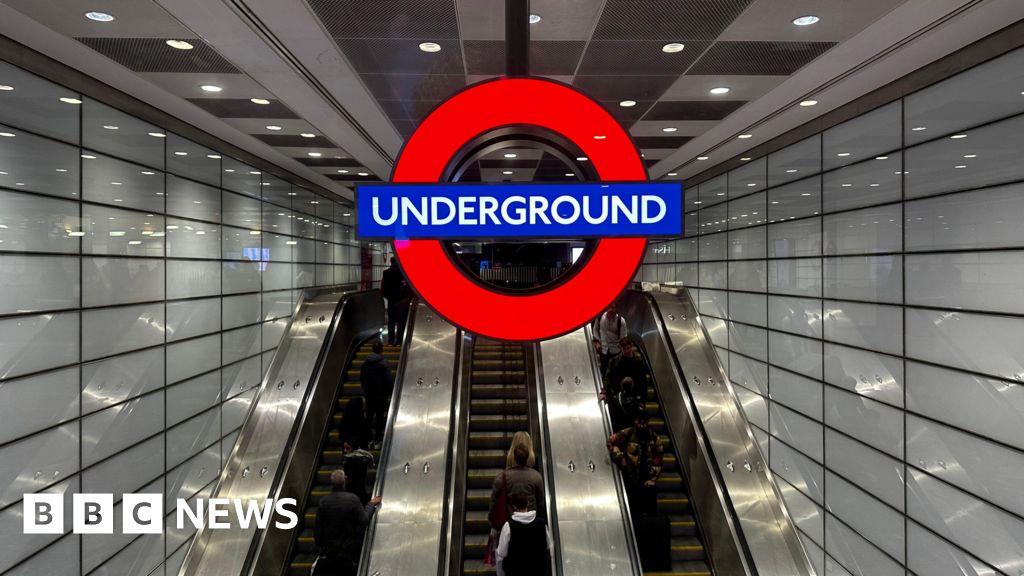Business
The Credit Card ‘Swipe Trap’: 5 Hidden Financial Risks You Must Watch Out For

Last Updated:
Overspending on credit cards can hurt finances. Spending Rs 40,000 out of a Rs 50,000 limit may reduce credit score and even lead to a lower card limit
Spending must remain within limits, and expenses should be tracked using a budgeting app. (Representative/Shutterstock)
Credit and debit cards, often referred to as plastic money, have revolutionised the shopping experience, making it incredibly easy and convenient. Credit cards, in particular, allow consumers to purchase their favourite items instantly, even without sufficient funds in their accounts. However, this convenience comes with potential financial pitfalls. If not managed properly, credit cards can become a financial burden. Understanding these risks can help individuals avoid such traps.
High Interest Rates Can Trap You In Debt
One of the primary dangers of credit cards is the high interest rates.
- Consider the case of Rahul, who borrowed Rs 10,000 with the intention of repaying it the following month. However, with interest rates ranging between 18-36%, his debt ballooned to Rs 15,000 within six months, trapping him in a cycle of debt.
- This illustrates the danger of carrying an outstanding balance on a credit card, where high interest rates can turn a small debt into a substantial one.
- To avoid this, it is crucial to pay the full bill each month and prioritise clearing the card with the highest interest rate first. Additionally, opting for the EMI (Equated Monthly Installment) option, while checking the interest calculator, can be beneficial.
The Ghost Of Late Payments
- Late payments pose another significant risk, as they can negatively impact credit scores for up to seven years. This can affect not only the ability to secure loans but also job prospects and rental applications.
- Setting up auto-payment and calendar reminders can help avoid late payments. At the very least, paying the minimum amount on time is essential, though full payment is always preferable.
The Danger Of Overspending
- Overspending is a common issue with credit cards. For example, if the card limit is Rs 50,000 and Rs 40,000 is spent, it could lead to a reduced credit score and a lowered card limit.
- Spending more than 30% of the credit limit can label a person as ‘high risk’ to banks.
- To prevent this, it is advisable to follow the 30% rule, using budget apps and distinguishing between needs and wants.
The ‘Greed Trap’ Of Credit Card Rewards
- Many people end up shopping more than needed just to earn cashback. Rewards worth Rs 2,000 often lead to an extra spend of Rs 20,000.
- The lure of points, miles, or cashback creates an illusion of savings — when in reality, it’s overspending.
- To prevention this, rewards should be treated as a bonus, not a goal. Spending must remain within limits, and expenses should be tracked using a budgeting app.
The Hidden Ghost Of Secret Charges
- Credit cards often include hidden charges. For instance, Vikram used his card during an overseas trip and was shocked to see an additional bill of Rs 5,000 — comprising a 3% foreign transaction fee, annual fee, and late payment charge.
- Annual fees, overlimit penalties, and currency conversion costs are among the many charges that often go unnoticed.
- To prevent this, the fine print must be reviewed carefully before selecting a card. Monthly statements should be checked for unexplained charges, and opting for a no-fee card is advisable.
Follow These 3 Golden Credit Card Rules
To be a savvy credit card user, one should follow these three golden rules:
- Track every transaction with apps like Mint or PhonePe,
- Create an emergency fund instead of relying on credit cards,
- Stay informed about RBI guidelines, which cap interest rates at 36%. Smart usage is the key to avoiding financial pitfalls.
October 27, 2025, 17:22 IST
Read More
Business
Rivian stock slides 9% after unveiling new AI tech and robotaxi ambitions

Rivian debuted new tech at its first “Autonomy and AI Day” in Palo Alto, California, Dec. 11, 2025.
Credit: Rivian
PALO ALTO, Calif. – Electric vehicle maker Rivian Automotive has developed a custom chip, car computer and new artificial intelligence models that will enable it to bring self-driving features to its forthcoming vehicles, the company revealed at its first “Autonomy and AI Day” on Thursday here.
Shares of Rivian were off roughly 3% during the hourlong event, and fell further as OpenAI made its own AI announcement Thursday, revealing its most advanced model yet. The stock was down more than 9% in afternoon trading.
Rivian also said it plans to roll out an Autonomy+ subscription with “continuously expanding capabilities” to customers of its second-generation vehicles in early 2026, to be powered by its Rivian Autonomy Processors and autonomy computers.
The Autonomy+ offering will be priced at $2,500 as a one-time, up-front purchase or is available for $49.99 per month to start. By comparison, competitor Tesla offers its premium FSD (Supervised) option for $8,000 up front or a $99 per month fee.
“AI is enabling us to create technology and customer experiences at a rate that is completely different from what we’ve seen in the past,” Rivian founder and CEO RJ Scaringe said during the event.
Company executives said in a statement that a near-future software update will include a “Universal Hands-Free,” capability, enabling Rivian customers “hands-free driving” on more than 3.5 million miles of roads in North America, covering the vast majority of marked roads in the U.S.
Scaringe said the new advanced driver-assistance system will continue to improve as more miles are driven, through reinforced learning.
Unlike its primary competitor, Tesla, Rivian said it intends to use lidar, or light detection and ranging, systems and radar sensors in its forthcoming R2 cars to enable “level 4,” or fully automated driving, as defined by SAE Levels of Driving Automation.
A passenger can sleep in the back seat in a level 4 self-driving car while it carries them to their destination in normal traffic and weather conditions. Waymo, the Alphabet-owned robotaxi leader in the U.S., considers its vehicles level 4.
Rivian CEO RJ Scaringe at the company’s first “Autonomy and AI Day” on Dec. 11, 2025, in Palo Alto, California.
Lora Kolodny | CNBC
Scaringe said Thursday the company’s forthcoming self-driving vehicles enable it to pursue robotaxis, which Tesla has promised for years but has yet to launch.
“Now, while our initial focus will be on personally owned vehicles, which today represent a vast majority of the miles to the United States, this also enables us to pursue opportunities in the rideshare space,” Scaringe said during the event.
Rivian is not alone in aiming to deliver autonomous systems that meet level 4 expectations, while rolling out partially automated features along the way to drivers who generally want these to reduce fatigue on long drives or make them safer behind the wheel overall.
Tesla and General Motors are working on their own proprietary driverless systems, while Honda, Lucid and Nissan have partnered with venture-backed autonomous vehicle tech startups (Helm.AI, Nuro and Wayve, respectively) to develop similar systems with a range of different technical approaches.

Rivian and Tesla stock’s since Rivian went public.
Powering Rivian’s self-driving aspirations will be a new in-house chip, which is set to launch in 2026. Vidya Rajagopalan, Rivian vice president of electrical hardware, said the chip uses “multi-chip module” packaging and has “high memory bandwidth,” which is “key for AI applications.” Rivian’s chip boasts bandwidth of 205 gigabytes per second.
“Rivian is uniquely positioned to move from a software-defined vehicle and bring to the world an AI-defined vehicle,” Rivian Chief Software Officer Wassym Bensaid said.
The automaker also announced a new AI-powered “Rivian Assistant,” a next-generation voice interface launching in early 2026 on its first- and second-generation vehicles.
Rivian is under pressure to prove its future growth potential to investors and to grow its customer base amid slowing sales of battery electric vehicles in the U.S. and competition from Chinese EV makers internationally.
The fully electric vehicle segment has experienced a sales slump domestically after the Trump administration put an early end in September to a $7,500 federal tax credit previously available for EV buyers in the U.S.
Shares of Rivian are up about 25% this year, but remain off more than 80% since the company’s 2021 initial public offering amid internal and external challenges.
Business
FTSE 100 up as Fed sounds softer tone than feared

The FTSE 100 forged ahead on Thursday as a less “hawkish” than feared rate cut by the US Federal Reserve and a brighter US economic outlook spurred stocks, despite some fresh AI worry.
The FTSE 100 index closed up 47.63 points, 0.5%, at 9,703.16. The FTSE 250 ended 21.13 points higher, 0.1%, at 21,852.10, and the AIM All-Share ended up 1.04 points, 0.1%, at 747.66.
In Europe on Thursday, the CAC 40 in Paris closed up 0.8%, while the DAX 40 in Frankfurt ended 0.7% higher.
After Europe’s close on Wednesday, the US central bank cut interest rates by 25 basis points as expected and chairman Jerome Powell struck a softer tone than some had feared.
Bank of America called it an “unintentionally dovish cut”, Citi said markets “had overestimated how hawkish Mr Powell would sound,” while JPMorgan noted Mr Powell’s opening remarks were “less forceful than those used in October”.
“Relative to markets that were looking for Powell to push back more strongly at the potential for further cuts, this was a dovish outcome,” Citi said.
Goldman Sachs said “dovish labour market comments” and the “lack of a stronger lean toward a January pause led to a dovish market reaction”.
In addition, the Federal Reserve raised expectations for economic growth in the US for 2026 through to 2028, expecting a bounce back after the government shutdown.
Sarah House, analyst at Wells Fargo, said: “Our base case remains that the current easing cycle is not over yet but rather that it is entering a slower phase.”
Stocks in New York were mixed at the time of the London equity close after rising sharply on Wednesday in the wake of the Fed’s rate call.
The Dow Jones Industrial Average was up 1.0%, the S&P 500 index was 0.4% lower, while the Nasdaq Composite was down 1.1%.
Oracle knocked the more optimistic market mood after hours on Wednesday by warning of higher capital expenditure as it grapples with buoyant artificial intelligence demand.
Shares in the Texas-based cloud technologies-focused company were 14% lower in New York on Thursday around the time of the London close.
Stifel noted shares are being hit by “continued uncertainty around exactly how Oracle is going to fund its data centre build-out requirements”.
The Fed rate call saw bond yields drop and the dollar fade.
The yield on the US 10-year Treasury was quoted at 4.12%, down from 4.18% on Wednesday. The yield on the US 30-year Treasury was at 4.77%, trimmed from 4.78%.
The pound was quoted higher at 1.3416 dollars at the time of the London equities close on Thursday, compared with 1.3332 dollars on Wednesday.
The euro stood at 1.1746 dollars, up against 1.1647 dollars. Against the yen, the dollar was trading lower at 155.24 yen compared with 156.36 yen.
Figures showed the US trade deficit unexpectedly decreased markedly in September.
According to data published by the US Census Bureau and the US Bureau of Economic Analysis the country’s trade deficit narrowed by 11% monthly in September to 52.8 billion dollars, from 59.3 billion dollars in August.
The FXStreet-cited consensus was for the trade deficit to increase to 63.3 billion dollars in September.
The last time the US’s trade deficit was lower was in June 2020, when it was at 49.16 billion dollars.
US exports climbed 3.0% to 289.3 billion dollars, while imports edged up 0.6% to 342.1 billion dollars.
In London, renewed strength in the gold price lifted Endeavour Mining, up 3.2%, and Fresnillo, up 3.0%.
Magnum Ice Cream continued its strong first week of trading, rising a further 5.6%, while an AI collaboration with IBM supported Pearson, up 2.0%.
Grocer J Sainsbury was lifted 2.1% by an upgrade by Citi to “buy” but the same broker reiterated a “sell” rating on Primark owner Associated British Foods, helping push shares down 1.6%.
Also on the wane, betting operator Entain, which fell 2.2% after stating Rob Wood, its chief financial officer and deputy chief executive, will step down in 2026 after 13 years at the firm.
On the FTSE 250, RS Group took the spoils, up 6.2%, after netting an upgrade to “overweight” from JPMorgan.
But Ceres Power slid 11% after a scathing attack from activist short-seller Grizzly Research.
In a report, Grizzly Research said Ceres is “hiding a flawed business model with abysmally small revenue potential behind a facade of big-name announcements and lofty projections”.
Grizzly said its research shows that Ceres has a history of “ambitious partnerships and unrealistic projections that keeps repeating”.
Faring better, Drax Group advanced 1.4% after stating it expects full-year adjusted earnings before interest, tax, depreciation and amortisation to be at the top end of the consensus forecast range of £892 million to £909 million.
In addition, the electricity generator said it is looking at opportunities to maximise value from the Drax Power Station site, which covers 1,000 acres in North Yorkshire.
Brent oil was quoted at 60.91 dollars a barrel at the time of the London equities close on Thursday, down from 61.42 dollars late Wednesday.
The biggest risers on the FTSE 100 were Magnum Ice Cream, up 63.20 pence at 1,186.20p, Ashtead Group, up 225.00p at 5,010.00p, JD Sports Fashion, up 2.80p at 81.72p, Endeavour Mining, up 110.00p at 3,544.00p and IAG, up 12.00p at 397.60p.
The biggest fallers on the FTSE 100 were Informa, down 30.60p at 899.00p, Smith & Nephew, down 34.50p at 1,214.50p, Entain, down 16.60p at 743.20p, AB Foods, down 33.00p at 2,097.50p and Centrica, down 2.20p at 165.30p.
Friday’s economic calendar has CPI prints in France and Germany and UK GDP and industrial production figures.
Friday’s UK corporate calendar has half-year results from Taylor Maritime.
– Contributed by Alliance News
Business
London Underground fares to go up by 5.8% in 2026

The cost of travelling on the London Underground, the Overground and the Elizabeth line is set to rise by 5.8% next year, the mayor of London has confirmed.
The increase is 1% above the rate of inflation and will come into force in March.
The freeze in national rail fares announced last month will not apply to Transport for London services.
Sir Sadiq Khan says he proposes to freeze the price of Travelcards until March 2027 which means the weekly and daily caps will not change, and fares on London buses and trams will not rise.
The mayor said a rise – equivalent to one percentage point above the RPI rate of inflation – was a condition of the £2.2bn capital funding deal that TfL agreed with central government in the spending review in June.
He said the freeze on bus and tram fares until July 2026 was “an emergency cost-of-living measure” funded by City Hall.
Sir Sadiq added: “This is the seventh time I’ve been able to freeze bus and tram fares, and it will particularly benefit those on the lowest incomes in our city.
“The plans would mean that only fares on Tube and TfL rail services would now increase from March 2026.
“I also plan to ensure that increases to pay-as-you-go fares on the Tube will be capped at 20p, with many only rising by just 10p.”
City Hall Conservatives criticised the announcement.
In a statement, they said: “Whilst the rest of the country enjoys a fare freeze, Sadiq Khan has burdened Londoners with cost increases that are disproportionately going to affect the young professionals that are the backbone of our city’s economy, as well the other millions of passengers who use these services.”
The Liberal Democrats said the mayor had “failed to make this case to his ‘mates’ in government like he promised he would, he’s now expecting working Londoners to stump up the costs instead”.
The fare rises will apply to all TfL-run rail services, including the Docklands Light Railway.
The mayor said the increase would mean an off-peak pay-as-you-go Tube fare from Tottenham Court Road in Zone 1 to Edgware in Zone 5 would rise from £3.60 to £3.80.
Pay-as-you-go fares on Tube and TfL rail services within Zone 1 only will rise from £2.90 to £3.10 in the peak, and from £2.80 to £3.00 during off-peak and weekends.
A peak-time journey from Upminster in Zone 6 to Cannon Street in Zone 1 will increase from £5.80 to £5.90.
The government capital funding deal is expected to help to replace aging fleets, upgrade signalling technology and improve buses.
The fare rises will be subject to a final decision by the mayor.
-

 Politics5 days ago
Politics5 days ago17 found dead in migrant vessel off Crete: coastguard
-
Uncategorized1 week ago
[CinePlex360] Your site has updated to WordPres
-

 Sports6 days ago
Sports6 days agoAustralia take control of second Ashes Test | The Express Tribune
-

 Business1 week ago
Business1 week agoAsian stocks today: Markets trade mixed ahead of US economic data; HSI nears 1% loss; Nikkei adds over 800 points – The Times of India
-

 Entertainment1 week ago
Entertainment1 week agoSabrina Carpenter recalls ‘unbelievable’ experience with pal Taylor Swift
-

 Fashion1 week ago
Fashion1 week agoBangladesh’s economic outlook cautiously optimistic: Govt
-

 Fashion4 days ago
Fashion4 days agoGermany’s LuxExperience appoints Francis Belin as new CEO of Mytheresa
-

 Tech1 week ago
Tech1 week agoThe Trump Administration Wants Immigrants to Self-Deport. It’s a Shit Show







